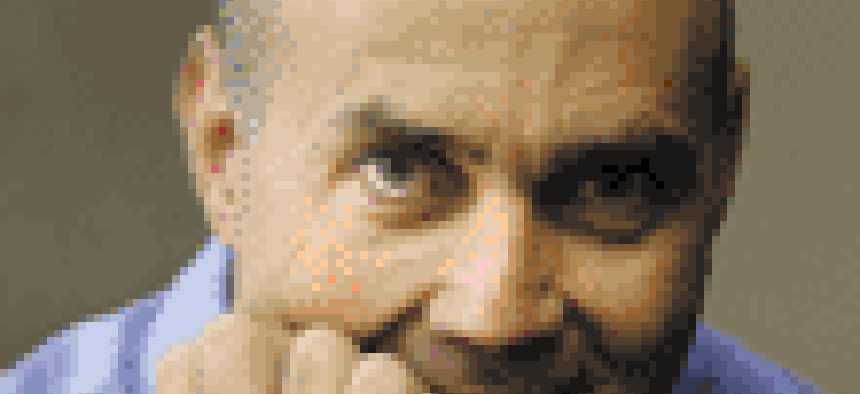Tech Success: Altiris puts upbeat on downtime

Using migration software from Altiris Inc., Lockheed Martin Corp. has cut to one-third the time needed to move files and settings from old computers to their replacements. And for an operation that replaces 3,500 NASA computers a year, this translates into some real time savings, both for the government and the integrator.
Using migration software from Altiris Inc., Lockheed Martin Corp. has cut to one-third the time needed to move files and settings from old computers to their replacements. And for an operation that replaces 3,500 NASA computers a year, this translates into some real time savings, both for the government and the integrator. Lockheed Martin, Bethesda, Md., is responsible for more than 11,000 desktop computers at NASA's Johnson Space Center in Houston, under the company's $4.3 billion portion of the Outsourcing Desktop Initiative, or ODIN. The contract was awarded in 1997 to OAO Corp., which was later purchased by Lockheed Martin. Each year, Lockheed Martin replaces 3,500 computers with upgraded computers and applications as part of a three-year phase-out cycle.What this means for program managers is that all the user data from the old computers must be transferred to the new ones: documents, e-mail settings, printer preferences, browser bookmarks, application preferences and so on."All of these elements are part of what we call 'the personality' that has to be restored on the new computer," said Ed Emig, deputy director of business operations for Lockheed Martin Information Technology.To automate this process, Lockheed Martin uses Altiris' PC Transplant Pro, which scours a user's computer and bundles all user files into an executable file. When executed, it returns the files to the new computer in their original locations.In Lockheed Martin's operation, these files are backed up on a storage network. After the computers are swapped, the files are downloaded on the new computers.By automating the process, the average time a Johnson Space Center worker is without his or her computer has shrunk from four and one-half hours to an hour and a half, according to Emig. And for the administrator, the time it takes to complete this process is cut by half.The software can move data files and even settings between versions of Microsoft Corp.'s Windows operating systems, such as Windows 95, Windows 98 and Windows XP, said Tyler Smith, marketing vice president for the Lindon, Utah-based Altiris.The program works by identifying the file extensions of the data files produced by hundreds of popular applications. For customized or in-house programs, the company offers a tool that allows administrators to build their own migration file. The process can even be done remotely via a Web-based console called Altiris Notification Server.Altiris is one of several companies that offer desktop personality migration software, including Miramar Systems Inc., Symantec Corp. and Tranxition Corp.What distinguishes Altiris from its competitors is how well the company's software tools work together as a unified suite, said Fred Broussard, senior research analyst for research firm International Data Corp., Framingham, Mass., a subsidiary of International Data Group, Boston.In addition to PC Transplant Pro, Altiris offers a number of related IT management products, including asset tracking programs for both hardware and software, contract compliance software, help-desk software and usage metering programs. All may be purchased separately or together as an integrated suite.Bundled solutions allow organizations to get a better handle on what software is on their systems and how it is used, Smith said. For instance, Altiris software can inventory the number of copies of programs on all network computers and compile statistics on how often each copy is actually used. Because companies such as Microsoft are encouraging organizations to do full accounting of all their desktop software to comply with licensing agreements, such reports not only will allow organizations to meet compliance but also make smarter decisions on how many licenses to buy, Smith said.With 250 employees, Altiris had a $10.2 million loss in 2001 on $34.5 million in sales, according to company records. The company filed an initial public offering in May.To increase government sales, the company is moving its federal sales office to Washington."In many cases, we offer services to go along with our software. In other cases, companies will offer services around our solution," Smith said. The company's products are used by offices in the Education Department, the Postal Service, the Navy and the National Guard. In addition to Lockheed Martin, integrators such as Electronic Data Systems Corp., Science Applications International Corp. and Unisys Corp. also use the company's products.PC Transplant Pro 3.6, costs $28 per desktop up to 99 nodes, and volume discounts apply for larger purchases.
 Software aids in NASA desktop upgrades
Software aids in NASA desktop upgrades

Tyler Smith, vice president of marketing for Altiris
NEXT STORY: Dialing up a new system

